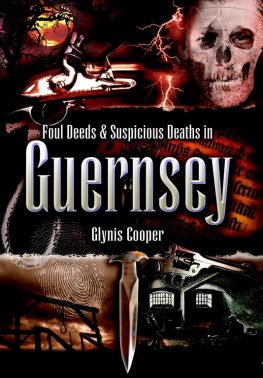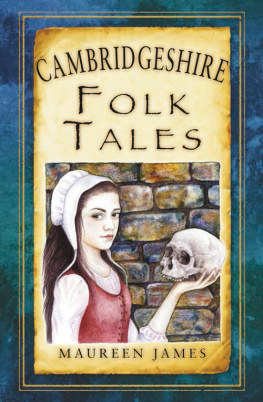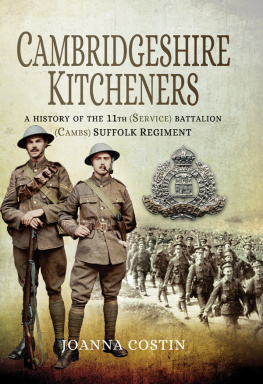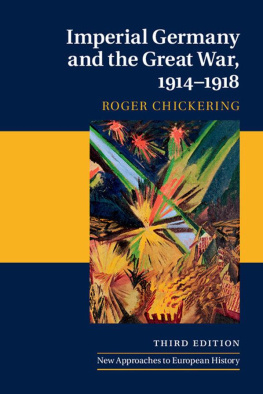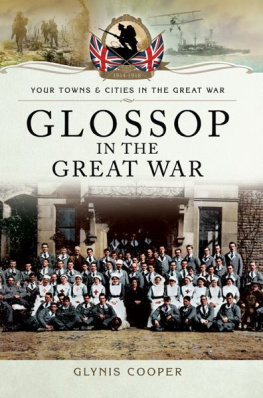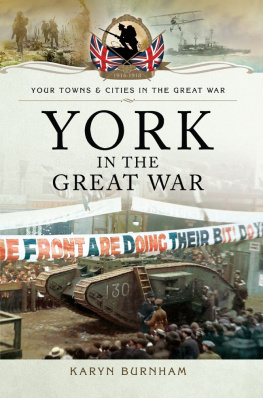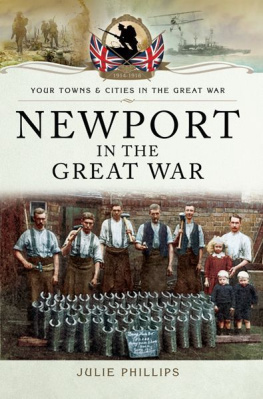YOUR TOWNS & CITIES IN WORLD WAR TWO
CAMBRIDGESHIRE
AT WAR 193945
Dedicated to fond memories of Cambridge, to my sister Troy Hoskin and my brother Daryl Cooper, who are part of the first post-war generation and who both read for their degrees at Churchill College in Cambridge; to all the people of Cambridgeshire: town, gown, and county, who fought so bravely on all fronts in the Second World War, and especially to those who made the supreme sacrifice, particularly the young RAF pilots and the Fen Tigers, for our freedom from tyranny.
Stands the Church clock at ten to three and is there honey still for tea? (Rupert Brook, Grantchester , 1912)
There is still honey for tea at ten to three in Grantchester today thanks to the bravery and sacrifices of Cambridgeshire at War 19391945.
YOUR TOWNS & CITIES IN WORLD WAR TWO
CAMBRIDGESHIRE
AT WAR 193945
GLYNIS COOPER
First published in Great Britain in 2020 by
Pen & Sword Military
An imprint of
Pen & Sword Books Ltd
Yorkshire Philadelphia
Copyright Glynis Cooper, 2020
ISBN 978 1 47387 583 8
eISBN 978 1 47387 585 2
Mobi ISBN 978 1 47387 584 5
The right of Glynis Cooper to be identified as Author of this work has been asserted by her in accordance with the Copyright, Designs and Patents Act 1988.
A CIP catalogue record for this book is available from the British Library.
All rights reserved. No part of this book may be reproduced or transmitted in any form or by any means, electronic or mechanical including photocopying, recording or by any information storage and retrieval system, without permission from the Publisher in writing.
Pen & Sword Books Limited incorporates the imprints of Atlas, Archaeology, Aviation, Discovery, Family History, Fiction, History, Maritime, Military, Military Classics, Politics, Select, Transport, True Crime, Air World, Frontline Publishing, Leo Cooper, Remember When, Seaforth Publishing, The Praetorian Press, Wharncliffe Local History, Wharncliffe Transport, Wharncliffe True Crime and White Owl.
For a complete list of Pen & Sword titles please contact
PEN & SWORD BOOKS LIMITED
47 Church Street, Barnsley, South Yorkshire, S70 2AS, England
E-mail:
Website: www.pen-and-sword.co.uk
Or
PEN AND SWORD BOOKS
1950 Lawrence Rd, Havertown, PA 19083, USA
E-mail:
Website: www.penandswordbooks.com
Acknowledgements
I would like to acknowledge the help and encouragement I have received in writing this book from my sister Troy Hoskin who gave me home cooked meals with lots of alcohol and information; for the patience of family, friends and long-suffering husband; from Celia Tyler at Cambridge Central Library; from Churchill College Archive Dept; from local Cambridge historian Mike Petty, and from the editorial team at Pen & Sword.
Introduction
Cambridgeshire today is a much larger county than it was during the Second World War. The Penguin Guide to Suffolk and Cambridgeshire , published post-war in 1949, devoted 125 pages to Suffolk and just 25 pages to Cambridgeshire. The original Cambridgeshire County Council, set up in 1888, covered mostly what is now known as South Cambridgeshire together with some of East Cambridgeshire. The neighbouring county council, set up at the same time, went under the quaint name of the liberty of the Isle of Ely. In 1965 these two councils merged to become known as Cambridgeshire and the Isle of Ely. The Local Government Act of 1972 then merged Cambridgeshire and the Isle of Ely with Huntingdonshire and the Soke of Peterborough.
For the sake of simplicity, the resulting much larger county (virtually doubled in size) was known simply as Cambridgeshire. Therefore, the scope of this book will be limited to the county as it was during the Second World War. It includes Cambridge itself which was the county town (it was not awarded city status until 1951); Soham, Histon, Milton, Swavesey, Burwell, Cottenham, Shelford, Sawston, Linton, Melbourn, Duxford, Waterbeach, Fulbourn, Cherry Hinton, Pampisford, Papworth Everard, Gamlingay, Whittlesford, plus a host of smaller villages and hamlets, as well as the villages and hamlets of the Isle of Ely.
Cambridge was (and still is) a trading and administrative centre, as well as the home of the second oldest university (founded 1209) in Britain, and much of the towns industry was centred around the university, while the main industry of the largely rural county was farming, both arable and pastoral. The annual agricultural Stourbridge Fair, held on Stourbridge Common in Cambridge until its abandonment in 1933, was one of the largest in the world.
The county had its own regiment, the Cambridgeshire Regiment, known colloquially as the Fen Tigers, who fought in both world wars. The Second World War, however, was a very different war from the First World War (Great War) of 1914-18. Aerial combat played a larger part and wrought far more death and destruction on the Home Front than had happened in the First World War. Cambridgeshire, however, fared better than many other places, despite its vulnerability in being closer to German occupied territories on the Continent, partly because it did not have the heavy industries of more northern towns or the strategic importance of London, and partly because Hitler had ordered that Cambridge University should not be bombed. In fact, it was rumoured he had ordered that both Cambridge and Oxford universities should be spared, so that, in return, the RAF would not bomb Heidelberg or Gottingen universities. Whatever the truth, the certainty is that all four of these universities suffered remarkably little bomb damage during the Second World War. There was just a single isolated incident of air raid damage, by a lone German fighter plane, to the writing room and music room of the Cambridge University Union Society building. Steel stacks saved most of the books from destruction. Doubtless, on his return, the unfortunate pilot would have been invited to take kafe und kchen in a meeting with Hitler that he would never forget.
The flatlands of Cambridgeshire proved to be ideal for the establishment of RAF airfields and their proximity to the East Coast was beneficial for accessing German hinterlands. Second World War aeroplanes had limited fuel capacity and could not fly the same distances as modern fighter aircraft. The geographical position of Cambridgeshire made the county very vulnerable to attack from the air and the geography also played a part in the area hosting large numbers of refugees and evacuees throughout the war. There were refugees from Nazi Germany and Hitlers racial and eugenics policies, the children of the Kindertransport project a humanitarian effort prior to the war which rescued around 10,000 predominantly Jewish children plus evacuees from large cities, northern and coastal towns and the Channel Islands, all places vulnerable to the Luftwaffe and a Nazi invasion.
Background
The twenty years between the end of the First World War and the start of the Second World War had been difficult ones. There was no land fit for heroes when the exhausted troops had returned from the trenches in 1918/1919; just austerity, unemployment, lack of housing, educational and medical facilities. These were followed by the General Strike of 1926, the Wall Street Crash of 1929 and the Great Depression of the 1930s. However, the working classes, who had been so liberally sacrificed in the First World War, had succeeded in gaining social and political reforms in the decades before the war which had also seen the formation of trades unions and the foundation of the Labour Party. As a result of their efforts in the First World War many women won the right to vote and this was followed by the universal franchise of 1928. By this time the Labour Party had gained a considerable following among the working classes who were now keen to gain a fair share of the capitalist cake for which they had worked and struggled for so long. This did not suit an entitled and elite establishment who saw the peasants as getting above themselves and who felt that their aims were influenced by the Communist ideals of the Russian Revolution in 1917/1918.



